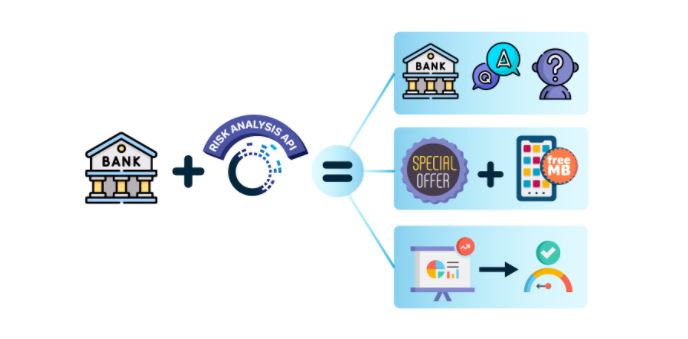Carriers are often protective of opening up core network components. As a result, MVNO’s have essentially been given an inflexible black box as their sole integration endpoint.
Locked out and unable to obtain the business intelligence needed to establish themselves in a competitive market, MVNOs often resort to cannibalizing their own margins to lower consumer costs.
As this plays out across other networks, it creates a race to the bottom. With MVNOs all fighting to lower prices, the value of carrier-direct plans declines along with the overall customer experience.
The cycle begins with that inflexible black box.
While carriers may be reluctant or unable to open it, OXIO’s custom-tailored API enables MVNOs to do just that. With our support, MVNOs are able to locate and access the data they need to provide value to consumers and build their service offering.
Why carriers are reluctant to unlock their network to MVNOs
While Facebook has 2.7 billion users, the largest social network in the world continues to be telecommunications. For decades, these networks — often relying on legacy protocol standards and built on complex legacy systems — have connected over 5 billion people across almost 200 countries.
For the past 20 years, mobile carriers have tried to unlock their potential to connect people, first with voice and SMS, then later with Internet data and more complex services. While they serve billions of users, they’ve always looked for ways to target more customer segments. To bring other companies into their communications ecosystem, mobile carriers sought to create a unique platform to hook those companies to their enormous potential.
From initiatives like Parlay/OSA — a 1998 industry initiative focused on building a common framework for presenting telecom services to third parties — to JAIN. Nowadays, the 3GPP is working towards the SCEF (Service Capability Exposure Function) to help translate 5G capabilities into a digestible API.
However, most of these initiatives have failed because mobile operators don’t always have the right motivations or DNA to offer solutions that provide user privacy and a good user experience. What’s needed is a privacy-focused third party who can build the correct API endpoints in a modern and secure fashion.
With this in mind, consider a company looking to build a location-based service that caters to 50,000 customers. For the carrier, building the infrastructure to support a small user segment is hardly worth the time, money, and resources. Nor is it in their DNA to build and release products within the company’s required timelines.
A location-based service requires permission-based systems for end-users to accept or deny requests. The network needs a way to obtain the location and a database to store the last known location. The service would also need a protocol to obtain such information in bulk. Triggering the network alone could involve any of the following:
• If the user is attached only to 2G/3G, the MAP protocol to talk to the HLR and generate the ProvideSubscriberInformation to gather the location information from the VLR and the SGSN.
• If the user is attached to 4G, the Diameter S6a needs to talk to the HSS and generate the InsertSubscriberData to gather the location information from the MME.
• If the user is attached to 5G, the HTTP2 protocol should talk to the UDM and the SMF to gather the location information from the AMF.
If that’s not challenging enough, a mistake on the above protocols could disrupt the whole network and impact the service of millions. These risks have led mobile carriers to be conservative when it comes to building or changing network components. A single component like the HLR / HSS can do 2k messages a second per million subscribers. An MNO with 50 million subs sees 100k messages a second. An interruption of 1 minute causes great disturbance and customer impact.
Consider also the extensive regulations and requirements faced by carriers. Failure to abide by quality standards has led to billions in fines lobbied against telecoms around the world. Layering systems onto these networks to support MVNOs adds complexity to an already complex system. With that comes an increased risk of outages, a decline in service quality, and ensuing financial losses.
Ultimately, for MNOs, the black box is the safest and most cost-effective solution that poses the lowest threat to network quality and security. However, MNOs are only one side of the transaction.
Even if MVNOs and other businesses were given complete access to the network, they’re typically not equipped with the resources or technical expertise needed to navigate — let alone utilize — that volume of raw data.
This is where OXIO comes in. Our custom-tailored API is designed to bridge the gap between our customers and the network intelligence they need.
How OXIO’s API delivers custom-tailored network data
OXIO’s API enables customers to easily access and utilize the information that would otherwise be trapped inside a single carrier network.
We don’t simply create an API that opens up the network to our customers. We support custom feature requests that enable our API to access the tools and data they need to fulfill their vision. Contrary to the technology-driven initiatives of mobile carriers, we’re driven by customer features and exciting business opportunities. If our customer is looking for location information or a specific webhook, it drives our engineering team to create endpoint solutions tailored to those needs. We provide digested information from the network so our customers can benefit from the added intelligence.
For example, our API would allow an enterprise to identify network users located near retail locations or browsing their website from a mobile device. From there, they could send virtual coupons, or provide complementary connectivity in exchange for consumer loyalty. Our API could enhance the service of a security company by delivering notifications in response to abnormal call patterns or locations.

For a financial institution looking to grow both its user base and profitability, our Risk Analysis API makes it possible to quickly ask questions about a user interested in a short-term, unsecured loan. The institution could then offer a month of free mobile service to incentivize the user to accept. Alternatively, that incentive could be offered in exchange for continuous online transactions. For financial institutions, the increased access to their customer’s privacy-friendly, opt-in network information should lead to better risk assessment and protection for future customers.

With the volume of network information available, the number of use cases is endless. The key is understanding those use cases and offering an API that delivers the data companies need. Using PCRF configurations, network preference policies, P-Gateway rules, and other key technologies, OXIO’s API allows MVNOs to paint a fuller and more detailed image of their users.
Bringing value to MNOs
While our custom-tailored API equips MVNOs with more options for differentiation than slashing prices, carriers also stand to gain from our approach. When it comes to enterprise value, progressive MNOs are starting to see the benefit of presenting their individual assets as plug-and-play elements. As Bain and Company point out in their eye-opening article, Telco 2030: Wait-and-See is No Longer an Option:
Large, integrated carriers are sitting on a hugely valuable asset, and separating out part or all of their networks will enable them to raise capital for the investments they need to make in the coming years, such as developing 5G, deploying fiber infrastructure, and building AI capabilities. This also frees the network assets to become new business entities with significant value.
While other carriers keep systems siloed and show no interest in building an accessible pool of data, we look to do the opposite. Through extracting and organizing network data, OXIO can quickly build specific APIs, features, and experiences that no other carrier can.
